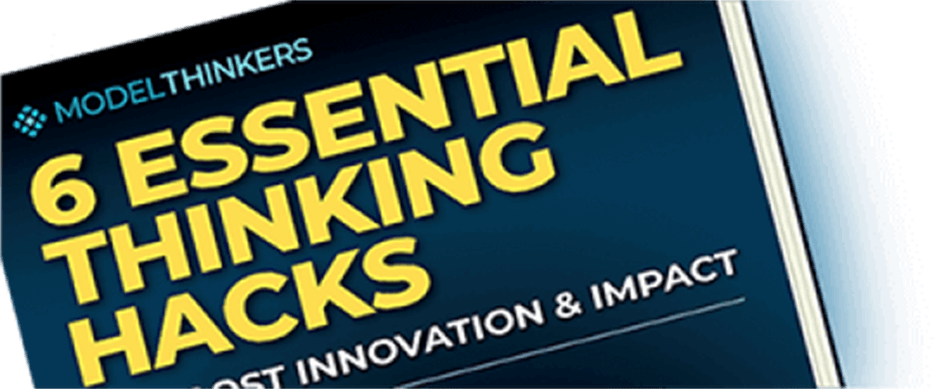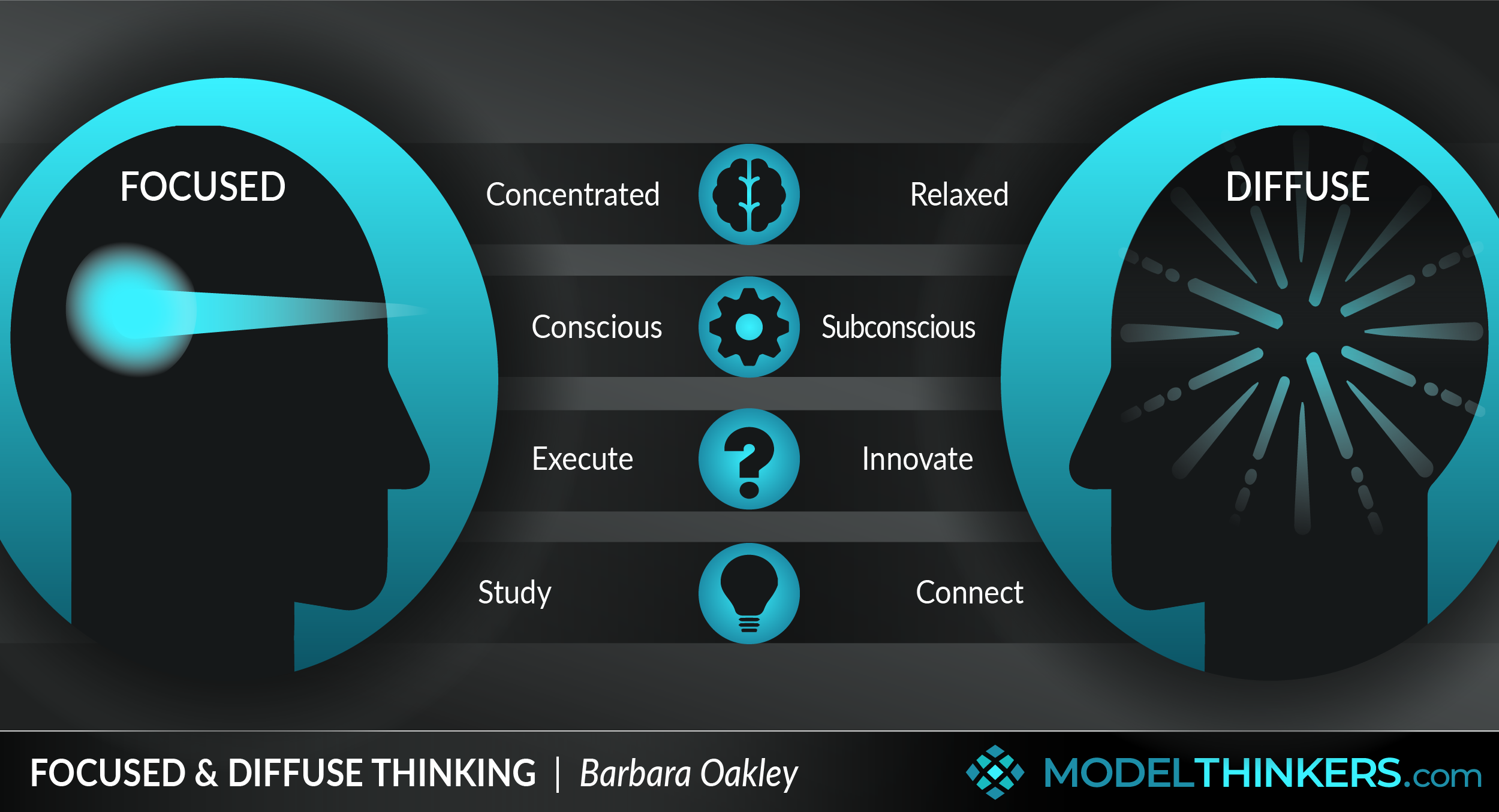Focused and Diffuse Thinking
Imagine that you’re trying to solve a challenging problem or learn a difficult new concept. Your obvious move would be to concentrate on it until you come up with a way forward, right? Well, this model suggests otherwise.
Focused and Diffuse Thinking describes two counterposed methods of approaching problems and learning. Focused Thinking is concentrated, conscious and relatively predictable. By contrast, Diffuse Thinking is relaxed, occurs largely subconsciously, and can result in surprising connections.
FOCUSED THINKING.
Barbara Oakley, the academic and author responsible for popularising this model, describes Focused Thinking as dependent on established neural pathways and existing thought patterns. It’s the type of thinking you access to understand and solve familiar problems as well as to study a concept.
The strength of Focused Thinking lies in its ability to analyse and solve problems in a sequential manner. It’s likely you’re applying a level of Focused Thinking as you read these words and try to understand this model.
DIFFUSE THINKING.
Diffuse Thinking is what happens when your mind relaxes, providing space for daydreaming and wandering thoughts. That's something that many people miss or undervalue — it's the fact that even when your conscious mind stops concentrating on something, your brain will continue to process, ponder and think.
Rather than being focused on a defined path, Diffuse Thinking allows your subconscious to make unexpected connections between disparate ideas. As a result, it can help you to develop innovative solutions and learn by connecting new and unfamiliar concepts with existing ones.
You’ll often experience Diffuse Thinking when you go for a walk, have a shower, take a long drive in the country, or just stare out the window.
A QUICK WATER METAPHOR.
Still not clear about the difference? Well, if your thought process was water, Focused Thinking would involve shooting a thin jet of water that was directed, powerful and aimed in a single, predictable direction. By contrast, Diffuse Thinking would be akin to a sprinkler, shooting mists of water in all directions, covering more ground in a lighter, unpredictable pattern.
POWER IN THE COMBINATION.
So which is better? Oakley explains that the trick is not to choose between the two approaches, but rather to cycle between Focused and Diffuse Thinking for the greatest impact.
Back to working on that challenging problem? Use Focused Thinking to rationally explore it and consciously define the real issue at hand. Then let your brain relax into Diffuse Thinking, allowing your subconscious mind to process and play with the ideas in your head and potentially come up with innovative solutions as a result.
Want to learn a difficult and unfamiliar concept? Study it with Focused Thinking, then let your brain shift into Diffuse Thinking. The combination will allow you conscious brain to investigate the concept, while your subconscious mind forms new links and connections to embed it into your memory and thinking.
THINKING HACKS FROM DALI AND EDISON.
Ever had a brilliant idea as you’re falling asleep, only to find it wiped from your mind when you woke up the next morning? Both Salvador Dali and Thomas Edison did too — only, rather than being annoyed, they found a way to take advantage of it.
Dali and Edison were independently aware that the transition between a wakeful conscious mind and deep slumber represented a powerful, creative space. They’d frame a challenge with Focused Thinking, fixing an idea or problem in their minds, before letting themselves start to fall asleep and enter Diffuse Thinking.
However, rather than surrendering to sleep, Dali and Edison were said to use a heavy key and a handful of ball bearings respectively, to snap them back to wakefulness and Focused Thinking. This combination allowed them to capture their subconscious memories and connections. See the In Practice section below for more and we should note — Oakley is quick to point out that while Dali talked about this approach, the Edison story is a bit of legend and has not been verified.
IN YOUR LATTICEWORK.
You might have noticed that this model bears some resemblance to Fast and Slow Thinking, one of the foundational models behind behavioural economics. Though very different for their takeaways and implications, these models easily co-exist with each other. For example, Focused Thinking can be thought of as a form of Slow Thinking, and Diffuse Thinking as a form of Fast Thinking.
Beyond that, consider using Focused and Diffuse Thinking in combination with other learning themed mental models such as Spaced Retrieval, Deliberate Practice and Double-Loop Learning. Use it to support innovative thinking as part of Framestorming and in combination with Temporal Landmarks to create a clear break between extended Focused and Diffuse Thinking sessions.
This model is a useful companion with Deep Work, in fact, you can see how Cal Newport, the creator of Deep Work, incorporates a form of Focused and Diffuse Thinking into his routine via the In Practice section below.
If you want to try to influence your Diffuse Thinking, while you can't by definition do it consciously, you might want to apply the Zeigarnik Effect, by interrupting your work before you finish it including leaving a key question unanswered. Be sure to use the canvas at the bottom of this page for practical help in combining Focused and Diffuse Thinking, Deep Work and the Zeigarnik Effect.
Finally, one of the most practical ways to consistently apply this approach is through the Pomodoro Technique.






